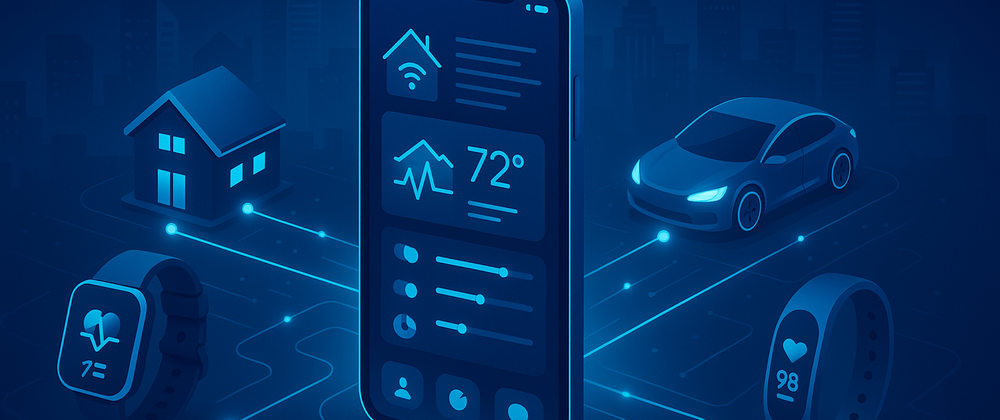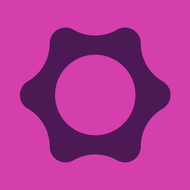The smartphone in your pocket is no longer just a communication device; it's a gateway to an increasingly interconnected world. For years, apps have been evolving, becoming more powerful, intuitive, and indispensable in our daily lives. But a new paradigm is emerging, one that promises to elevate user experiences to unprecedented levels of seamlessness and personalization: the integration of the Internet of Things (IoT) with smarter applications. This isn't just about controlling your smart home from your phone; it's about creating a truly symbiotic relationship between the digital and physical realms, where apps anticipate your needs, react to your environment, and orchestrate effortless journeys through your day.
The Evolution of Apps: From Utility to Intuition
Initially, mobile applications were primarily functional – tools for specific tasks like checking weather, sending emails, or playing simple games. Their utility was undeniable, but their connection to the real world was often limited to manual inputs. Then came the era of location-aware apps, leveraging GPS to offer services like navigation and local recommendations. This was a crucial step, but still largely reactive.
The true leap forward is happening now, as apps begin to shed their passive nature and embrace proactive, intelligent interactions. This transformation is driven by the explosive growth of the Internet of Things, a vast network of physical objects embedded with sensors, software, and other technologies for the purpose of connecting and exchanging data with other devices and systems over the internet. From smart home appliances and wearable fitness trackers to industrial sensors and connected vehicles, IoT devices are generating an unprecedented volume of data about our environment, our habits, and our interactions with the world.
IoT as the Unseen Hand: Powering Seamless Experiences
Imagine an app that doesn't just tell you the traffic but automatically adjusts your morning alarm based on real-time road conditions and your preferred arrival time at work. Or a healthcare app that monitors your vital signs through a wearable, detects anomalies, and proactively schedules a teleconsultation with your doctor. These aren't futuristic fantasies; they are the tangible outcomes of integrating IoT with intelligent app design.
The core principle here is the elimination of friction. Traditional user journeys often involve numerous manual steps, switches between different apps, and a constant need for user input. IoT integration aims to automate these processes, making interactions so fluid they become almost invisible. This "seamlessness" is achieved through several key mechanisms:
1. Contextual Awareness:
IoT sensors provide apps with a rich understanding of the user's environment. This includes location, time of day, temperature, light levels, activity levels, and even emotional states (through biometrics).
With this context, apps can offer highly relevant and timely services. For example, a smart lighting app linked to a motion sensor can automatically adjust brightness as you enter a room, rather than requiring you to open the app and manually dim the lights.
2. Proactive Personalization:
Beyond reacting to context, smarter apps leverage IoT data to anticipate user needs and preferences. If your smart coffee machine learns your morning routine, your coffee could be brewing at your preferred strength just as your alarm goes off. A smart thermostat, connected to your calendar, could automatically adjust the temperature in your home before you arrive back from a trip. This level of personalization transforms apps from tools into intelligent assistants.
3. Automated Workflows:
IoT integration allows for the automation of complex multi-device workflows. Consider a smart home scenario: your arrival home (detected by your phone's GPS or a smart lock) could trigger a chain of events – lights turning on, thermostat adjusting to your preferred temperature, and your favorite music starting to play. All of this orchestrated seamlessly by a central app, without a single manual command from your end.
4. Real-time Insights and Feedback:
IoT devices are constantly generating data. Apps can harness this real-time stream to provide instant feedback and actionable insights. A fitness app connected to a smart scale and heart rate monitor can offer real-time coaching during a workout and track progress over time. A smart security app can instantly alert you to unusual activity in your home.
Key Areas Where IoT is Redefining App Experiences:
1. Smart Homes and Connected Living:
This is perhaps the most visible application. Apps are no longer just remote controls; they are the central hubs for managing lighting, climate, security, entertainment, and even appliance operation. Think of apps that intelligently conserve energy by learning your habits, or those that automatically lock doors and arm security when you leave.
2. Health and Wellness:
Wearable devices are at the forefront of this revolution. Apps integrated with smartwatches, fitness trackers, and even smart clothing can monitor vital signs, track activity, analyze sleep patterns, and provide personalized health recommendations. The future holds the promise of proactive health management, where apps can detect early signs of illness and facilitate timely interventions.
3. Connected Vehicles and Smart Transportation:
Car manufacturers are increasingly integrating IoT into their vehicles. Apps can remotely start your car, pre-condition the cabin, track its location, and even monitor driving behavior for insurance purposes. In smart cities, apps can provide real-time traffic updates, guide you to available parking, and even manage public transportation schedules based on real-time demand.
4. Retail and Supply Chain:
IoT sensors in stores can track customer movement, analyze product popularity, and optimize inventory. Apps can then offer personalized recommendations, provide in-store navigation, and even facilitate frictionless checkout. In supply chains, IoT-enabled apps provide real-time tracking of goods, ensuring transparency and efficiency.
5. Industrial IoT (IIoT) and Smart Manufacturing:
While not directly consumer-facing, IIoT significantly impacts the efficiency and reliability of products we use daily. Apps integrated with industrial sensors monitor machinery performance, predict maintenance needs, and optimize production processes, ultimately leading to higher quality goods and faster delivery times.
Challenges and the Path Forward:
While the promise of smarter apps and seamless user journeys is immense, there are challenges to address:
Data Privacy and Security: The sheer volume of personal data collected by IoT devices raises significant concerns. Robust security protocols and transparent privacy policies are paramount to building user trust.
Interoperability: The IoT ecosystem is fragmented, with many different standards and platforms. Ensuring seamless communication between diverse devices from different manufacturers is a major hurdle. Standardized protocols and open APIs are crucial.
User Experience Design: While automation is key, the user must still feel in control. Designing intuitive interfaces that balance automation with user agency is vital to prevent frustration and ensure adoption.
Scalability and Performance: As the number of connected devices grows exponentially, ensuring that apps can handle the immense data flow and maintain high performance will be a continuous challenge.
Despite these hurdles, the trajectory is clear. The future of applications is inextricably linked to the Internet of Things. Developers and designers must move beyond static interfaces and embrace a world where apps are dynamic, context-aware, and anticipatory. This requires a deeper understanding of sensor data, machine learning for predictive capabilities, and a commitment to creating truly integrated experiences.
Conclusion: The Invisible Interface
The rise of smarter apps, powered by IoT, is not just about adding features; it's about fundamentally reshaping our interaction with technology and the world around us. The ultimate goal is an "invisible interface" – where technology fades into the background, seamlessly supporting and enhancing our lives without demanding constant attention or complex inputs. From optimizing our energy consumption to improving our health outcomes and making our daily commutes effortless, the integration of IoT with intelligent applications is paving the way for truly seamless user journeys, making our lives more convenient, efficient, and intuitively connected than ever before. The future is not just smart, it's effortlessly intelligent.



Top comments (0)